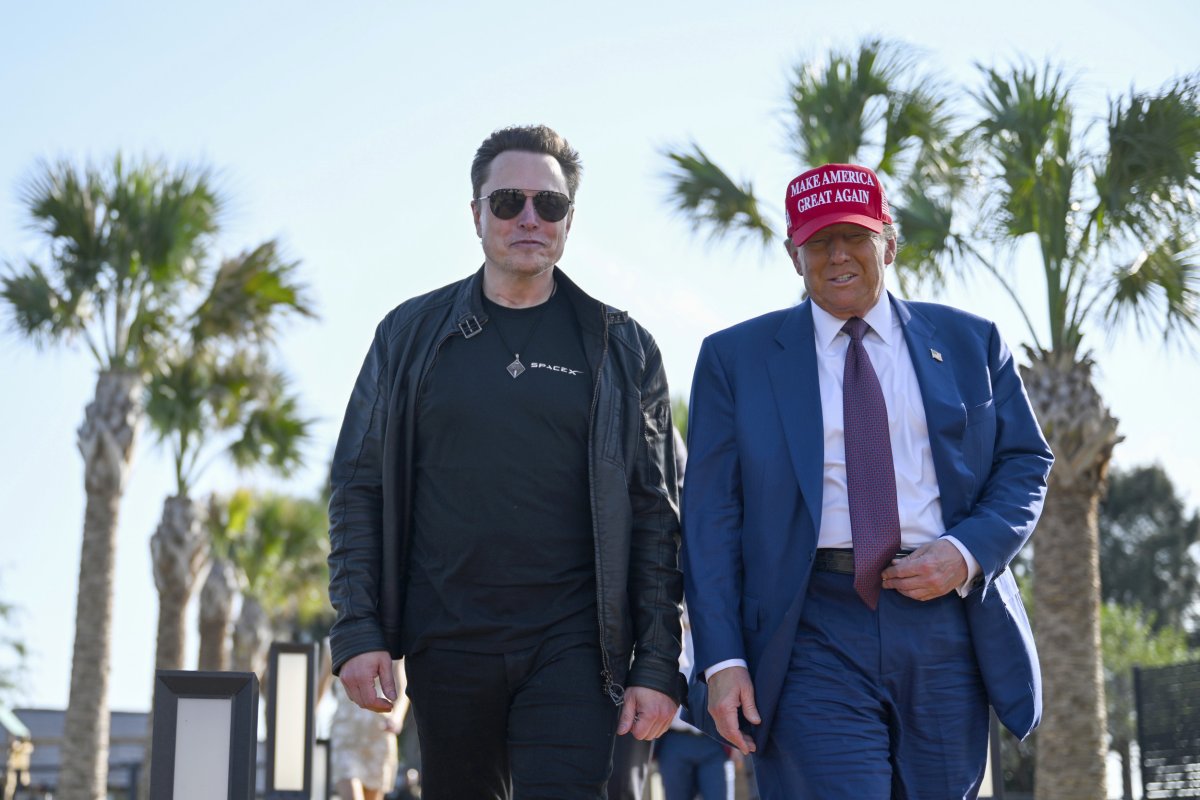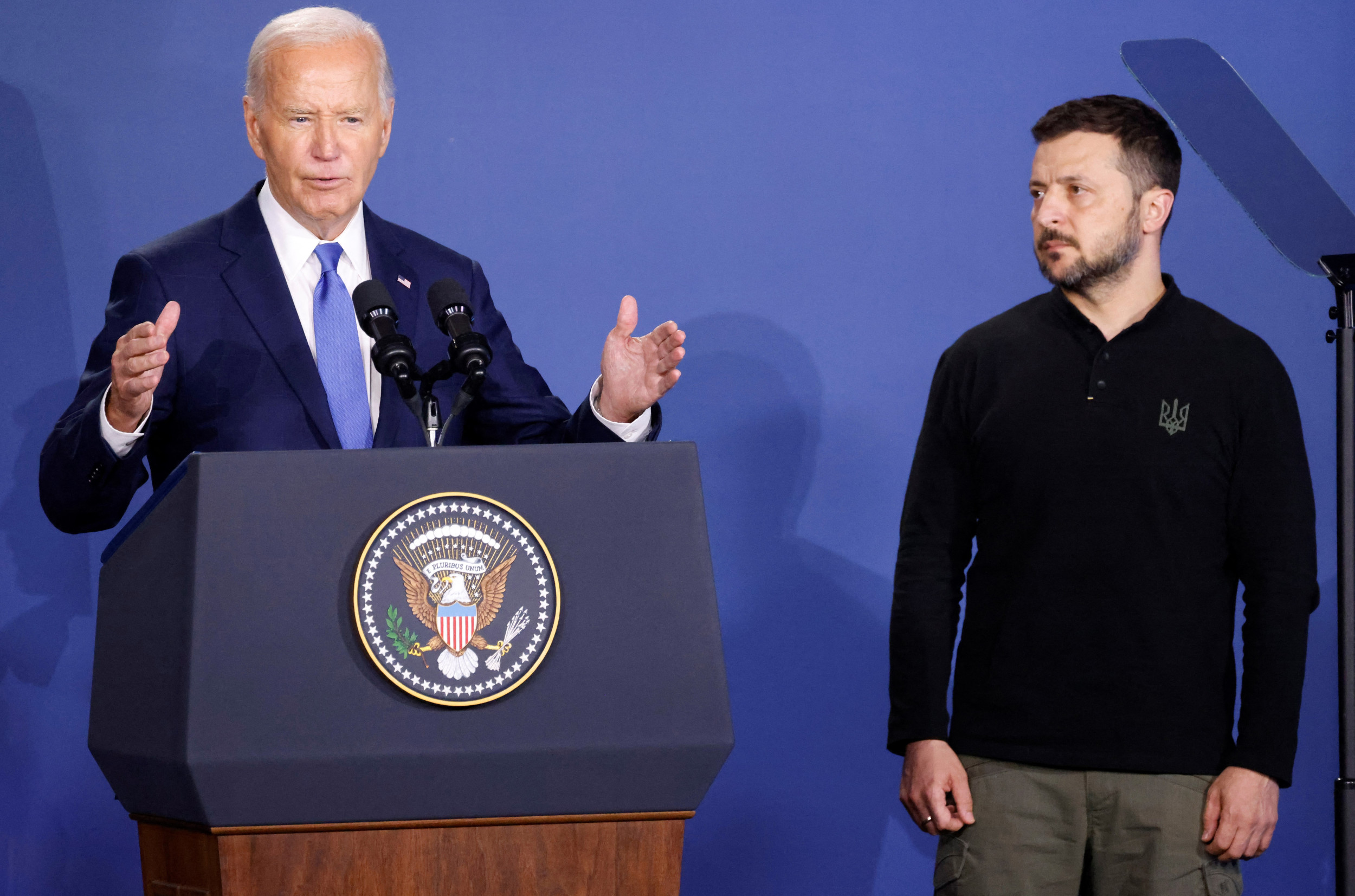From America's 250th birthday to the the 2026 World Cup, President-elect Donald Trump will enjoy the global spotlight during a number of major events in two years' time. But one will likely be sweeter for him than all others: he is poised to become only the second president in history to place a phone call to the moon.
In September 2026, NASA's Artemis program is due to return humans to the moon for the first time since 1972. If successful, it will be the culmination of years of scientific endeavor, commitment and ingenuity—all qualities for which NASA is famed around the world.
By then, however, NASA's role may have been transformed, experts have told Newsweek. The extraordinary comeback of Trump heralds the possibility of big changes to the 66-year-old agency, including much deeper partnership with the private sector, a push toward Mars exploration, and a renewed focus on competing with America's key rival on Earth and in space: China.
By Trump's side is Elon Musk, the billionaire entrepreneur who is the face of modern space exploration with his rocket company SpaceX. Musk, who is set to lead the newly created Department of Government Efficiency (DOGE), gave Trump a demonstration of his remarkable achievements when the president-elect joined him to watch a launch of SpaceX's Starship Rocket in Texas.
Musk's leadership at SpaceX has reshaped the space industry, demonstrating that private companies can deliver innovative, cost-effective solutions faster than government programs. However, his potential involvement in shaping space federal policy raises not only potential conflicts of interest, but also questions about priorities, funding, and his influence on NASA—an agency beset by ageing infrastructure and budget challenges.
Newsweek has reached out to Donald Trump and Elon Musk for comment via email.
NASA Budget Concerns
Trump's first term brought significant achievements in space policy, with the launching of the Artemis program in 2017 to return humans to the moon, a key initiative led by Vice President Mike Pence as chair of the National Space Council and space policy expert Scott Pace. Trump also established the U.S. Space Force, the first new military branch since 1947, calling it one of his proudest achievements of his presidency.
For a president often described as divisive, it was an example of a unifying vision. Casey Dreier, chief of space policy at the Planetary Society, said Trump's success in space exploration during his first term can be attributed to the bipartisan support he received.
"Space, fortunately, is one of the last remaining bastions of bipartisanship, something that the first Trump administration proved to be so," Dreier told Newsweek.
P.J. Blount, assistant professor of space law at Durham University in the U.K., said it was also a vision driven by clarity.
"Much of the Trump administration's successes in space policy in the first term was based on a clear policy to strengthen the US space industry. To this end the National Space Council drove policy that focused on creating opportunities to make the US space industry more competitive," he told Newsweek.
The Artemis program saw Democratic leaders such as Senators Maria Cantwell, Jeanne Shaheen, and John Hickenlooper, as well as former Speaker of the House Nancy Pelosi, join with Republicans to establish bipartisan support for returning humans to the moon.

NASA will need all the support it can get in the coming years. A hard-hitting report by the U.S. National Academies of Sciences, Engineering, and Medicine in October, titled "NASA at a Crossroads," identified myriad issues at the agency, including out-of-date infrastructure, pressures to prioritize short-term objectives and inefficient management practices.
Updating ageing infrastructure comes at a time when the agency's quest for funding has gotten more difficult. Last year, Congress cut NASA's budget by 2 percent after years of growth. The space agency has long operated under tight budgets, juggling ambitious projects with limited resources. Trump's second term may bring increased scrutiny to NASA's spending, with Musk's emphasis on efficiency and cost-cutting likely influencing budgetary decisions.
Musk, in his role as co-leader of DOGE, has already vowed to identify $2 trillion in savings from the federal budget, which he said will ensure taxpayer money "is spent in a good way."
Blount raised concerns about this approach. "NASA is already relatively cash-strapped for its various missions. While Musk may provide insights on management and efficiency, his claims of drastic budget reductions do not bode well for an agency that balances human spaceflight, science, and public benefits," he said.
A major opportunity for cost-saving—and a potential conflict of interest for Musk—lies in NASA's costly Space Launch System (SLS), the cornerstone of the Artemis program. Debuting in 2022 with the uncrewed Artemis 1 mission to the moon, the SLS is a single-use rocket that can only launch every two years, with a price tag of around $4.1 billion per launch. In contrast, SpaceX is working to reduce the cost of a single Starship flight to under $10 million.
The SLS is designed to launch the crewed Orion spacecraft to the moon by 2026, but the Orion crew capsule has faced issues with its heat shield that a recent audit determined threatens safety of the crew. This means the SLS and the broader architecture of the Artemis program are likely to come under close scrutiny by Congress, while the White House could halt the development of the SLS in favor of reusable rocket Starship for its Artemis program, even as NASA Associate Administrator Jim Free urged the incoming administration to maintain the current plans.
"We need that consistency in purpose. That has not happened since Apollo," Free told the American Astronautical Society's von Braun Space Exploration Symposium in October.
"If we lose that, I believe we will fall apart and we will wander, and other people in this world will pass us by," he added.
Cheryl Warner, a spokesperson for NASA, told Newsweek: "NASA is a bipartisan agency. In the coming weeks and months, we will work to ensure a smooth handover to the Trump Administration on Jan. 20, 2025. At this time, the agency remains focused on its current direction to advance our Moon to Mars exploration approach, new scientific discoveries, and innovations in aeronautics and space technology for the benefit of all."
SpaceX Set to Benefit
The potential Trump-Musk collaboration at NASA offers both opportunities and challenges. On one hand, it could accelerate humanity's return to the moon and first steps on Mars, while fostering innovation through commercial partnerships. On the other, it risks sidelining NASA's scientific missions and concentrating influence in the hands of private entities.
This could see Musk become somewhat of a double-edged sword for NASA.
"If Musk gains significant power in this policy process, then there are real questions as to whether the administration is dedicated to a vibrant space 'market' or whether it will return to monopoly control over certain aspects of space activities. NASA's role should be broader than simply procuring services from commercial companies; it must also prioritize science-driven missions and societal benefits," Blount said.
"Space was an area of policy stability during the first Trump administration," John Logsdon, who established the Space Policy Institute at George Washington University, told SpacePolicyOnline. "With Elon Musk likely in a position of influence, that is not likely to be the case this time around."
The role of Musk's SpaceX is likely to grow substantially under Trump's second term, particularly if SLS development is halted.
"SpaceX and other private companies have shown they can deliver faster, cheaper, and perhaps even safer solutions," Kani Sathasivam, professor of international relations at Salem State University, told Newsweek.
NASA has already asked the company, as well as Jeff Bezos' Blue Origin, to develop cargo landers for its Artemis missions, and to use those landers to deliver heavy equipment to the Moon by 2033.
"Having two lunar lander providers with different approaches for crew and cargo landing capability provides mission flexibility while ensuring a regular cadence of moon landings for continued discovery and scientific opportunity," Stephen D. Creech, NASA's assistant deputy associate administrator for the moon to Mars program, said in an announcement about the partnership.
But while public-private partnerships will no doubt offer greater opportunities for space exploration, there are concerns that the new administration may not tighten regulations enough for private space companies, leading to possible monopolies for Musk's company.
"It's not unreasonable to think that there could be either money or regulatory regime lifted to benefit the pace of Starship development," Dreier said in a separate interview with Space.com. The degree to which regulations on Starship are relaxed will ultimately depend on "where Elon Musk will fall in terms of his influence within the Trump White House—it's hard to extrapolate that," Drier added.
Sathasivam added that while he supports a partnership between NASA and private companies, it is crucial that the role of NASA in representing U.S. interests in space is maintained. "It is only NASA that ultimately carries the U.S. flag into space and represents national interests, particularly against state actors like China and Russia," he said.
"It is possible to envision a U.S. space industry where NASA and private companies coexist, both advancing science and market-driven exploration," Blount said.
Push for Mars and Countering China
Musk noted in 2015 that he started SpaceX due to NASA's slow progress on getting to Mars. "So when we went to the moon, we were supposed to have a base on the moon, we were supposed to send people to Mars and that stuff just didn't happen," he said.
The Trump-Musk vision for NASA appears centered on human exploration of the moon and then the Red Planet. "That Elon Musk is his close adviser obviously increases the salience of space and Mars exploration in particular," Drier said.
Musk's SpaceX is already developing Starship to transport people and cargo to the Moon and Mars. This means Starship could play a key role in transporting astronauts and equipment to the Red Planet, which would see the U.S. consolidate its dominance in space exploration.
However, critics argue that prioritizing these ambitious projects risks neglecting NASA's scientific missions. Trump's disposition towards Artemis, SpaceX and Mars exploration could signal that his administration will prioritize spaceflight programs over other areas of scientific research.
"For all of the money we are spending, NASA should NOT be talking about going to the Moon - We did that 50 years ago. They should be focused on the much bigger things we are doing, including Mars (of which the Moon is a part), Defense and Science!" Trump wrote in a post on X in 2019.
Bleddyn Bowen, from the School of Government and International Affairs at Durham University, told Newsweek that such a focus on spaceflight and Mars could come at the expense of "Earth and atmospheric sciences at Nasa and the National Oceanic and Atmospheric Administration (NOAA), which have been cut during the Biden era."
Space defense will remain another priority under Trump's administration. If re-elected, Trump has said he would strengthen U.S. military defenses in space by creating a Space National Guard, an idea that lawmakers in Congress have been proposing since 2021 but has yet to receive enough support to pass.
Meanwhile, Trump's space policy is likely to be centered around maintaining U.S. dominance in spaceflight in the face of China's space program, which has advanced quickly in recent years, now featuring its own version of Starship. The country plans to send astronauts to the moon by 2030 and establish a crewed lunar research station in collaboration with Russia over the next decade.
China has also accelerated its timeline for returning samples from Mars to Earth, potentially as early as 2031, ahead of the joint NASA-European Space Agency Mars Sample Return (MSR) mission.
Trump is unlikely to let China plant its flag on the moon unchallenged and will be acutely aware that there is now growing competition from China over Mars. A new space race is upon us; and for Trump and Musk, evolving the synergistic collaboration between NASA and private companies like SpaceX is crucial to the U.S. winning it.



















 English (US) ·
English (US) ·